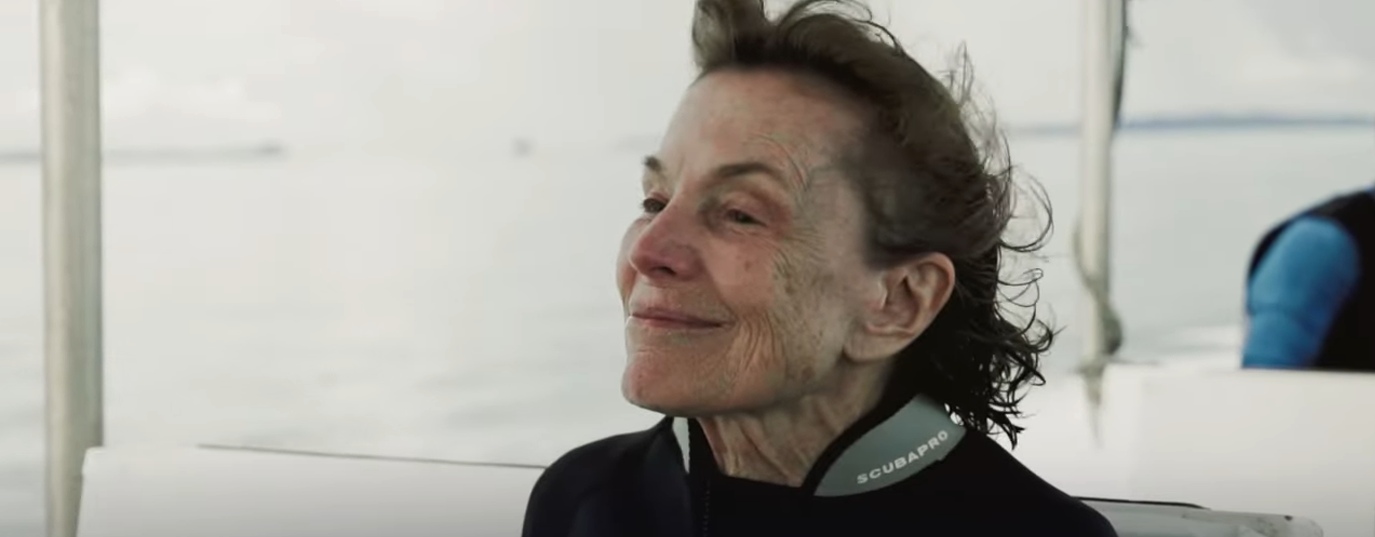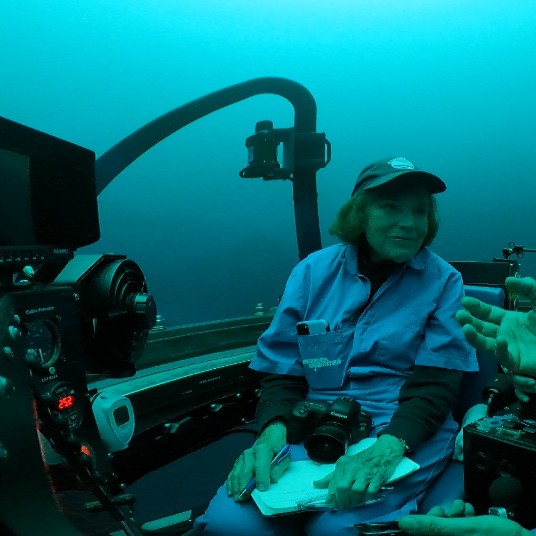“Restore what we can while we still have the chance” – Sylvia Earle
Sylvia Earle is the world’s most influential oceanographer. Journalist Amaro Gómez-Pablos chats with her 200 meters down on the importance of the oceans to the planet’s survival.
Born in 1935 in a small village in New Jersey State, Sylvia Earle was 12 when she moved with her family to a house by the sea in Florida. This marked the beginning of a passionate, unwavering love affair with the ocean that has continued to the present day. The oceanographer, known affectionately as “Her Deepness”, first dived at 17. Seven decades later and she’s still at it. “I’ve used more than 30 different kinds of submarine, I have lived under water for thousands of hours, getting to know life in ways that most people cannot have an opportunity to do. So I cannot just stay quiet,” she affirmed.
Journalist Amaro Gómez-Pablos went down 200 meters with her off the Galapagos Islands. The result was three moving episodes of exclusive film. An endearing conversation littered with powerful opinions through which the planet’s most influential oceanographer insists on the urgent role sustainable regeneration can play in order to save the oceans and life itself. “We are the ones who are causing the problem, but, lucky us, we also can understand the solutions… Restore what we can while we still have the chance,” urges the inspirational scientist as they converse to the immense backdrop of the Pacific.
“If we destroy nature, there is no economy. There is no life either”
Don't miss the three episodes
Sylvia Earle has come face to face many times with the devastating consequences of the climate crisis on sea life. As such, legitimate voices such as hers warn that the economy is inextricably bound to the climate and vice versa, as she raises awareness that caring for one is caring for the other. “Economists tend to follow the money, and the biologists are following the carbon, and we’re winding up at the same place. We have been causing the decline of the natural world, which means decline of the economy. If we destroy nature, there is no economy. There is no life either.”
The increase in temperature is a mortal trap for life in the oceans and, as a consequence, for the rest of the planet, too. Although the oceans form the largest habitat on Earth and consist of a system intrinsic to human survival, their deteriorating state of health has been largely relegated to the background in debates on climate change. “Now we know how important the oceans are, not just as a source of products and food, but the ocean keeps us alive,” Earle points out in her discussion with the Chilean journalist.
Photosynthesis in the ocean deep
 The oceans are considered to be the most important natural carbon sinks, able to absorb around 50% of carbon emitted to the atmosphere. Thousands of species of fish, algae, plankton, coral and photosynthetic bacteria are responsible for capturing carbon and consist of one of the main weapons nature has to try to contain the increase in the planet’s temperature. “A long-time quest has been how deep in the ocean does photosynthesis occur. We know that it is much deeper than we previously thought. And it’s important. Where is oxygen generated? Where is carbon captured? It’s a climate consideration,” Earle reminds us. One of every two breaths we take we owe to the ocean. “Probably more,” says Earle. “The heavy lifting of oxygen generation is in the ocean.”
The oceans are considered to be the most important natural carbon sinks, able to absorb around 50% of carbon emitted to the atmosphere. Thousands of species of fish, algae, plankton, coral and photosynthetic bacteria are responsible for capturing carbon and consist of one of the main weapons nature has to try to contain the increase in the planet’s temperature. “A long-time quest has been how deep in the ocean does photosynthesis occur. We know that it is much deeper than we previously thought. And it’s important. Where is oxygen generated? Where is carbon captured? It’s a climate consideration,” Earle reminds us. One of every two breaths we take we owe to the ocean. “Probably more,” says Earle. “The heavy lifting of oxygen generation is in the ocean.”
“We can’t solve the climate crisis unless we solve the ocean crisis. We can’t solve the ocean crisis unless we solve the climate crisis”
Earle has more than 100 expeditions behind her exploring the depths of the oceans. When she began, diving teams and equipment for discovering life hundreds of meters down were much more rudimentary than nowadays. “The technology now exists to do what could never be done when I was a child or at any time in all of preceding human civilization,” she pointed out, citing submarine robotics for the sustainability and observation of the ocean.
Indeed, having traveled all over the sea beds of the deep, discovering at close hand the life the oceans host and, although she knows how much this ecosystem is deteriorating because of human neglect, Earle is still capable of delivering a wise message full of hope. “We are the ones who are causing the problem, but, lucky us, we also can understand the solutions.”
It would take hours to go through Sylvia Earle’s CV as a marine biologist, researcher, explorer, lecturer… In 1964, she formed part of the first expedition to explore the depths of the sea off the Seychelles – the only woman among 70 men and an example of femenine leadership that would change the history of ocean research. To this, she added over 7,000 hours of diving, lived for two weeks at 18 meters depth off the Virgin Islands, and holds the solo diving record of 1,000 meters. Time magazine made her its “Hero for the Planet” in 1998. She received the Princess of Asturias Concordia Award in 2018. We could go on and on with the recognitions.
Despite her extensive career working to care for the oceans and the life in them, to Gómez-Pablos’ question on how long her work would continue to raise awareness, she replied: “As long as I breathe, as long as I live.” Leaving us with a final thought to reflect on: “We can’t solve the climate crisis unless we solve the ocean crisis. We can’t solve the ocean crisis unless we solve the climate crisis.”
Sources:

